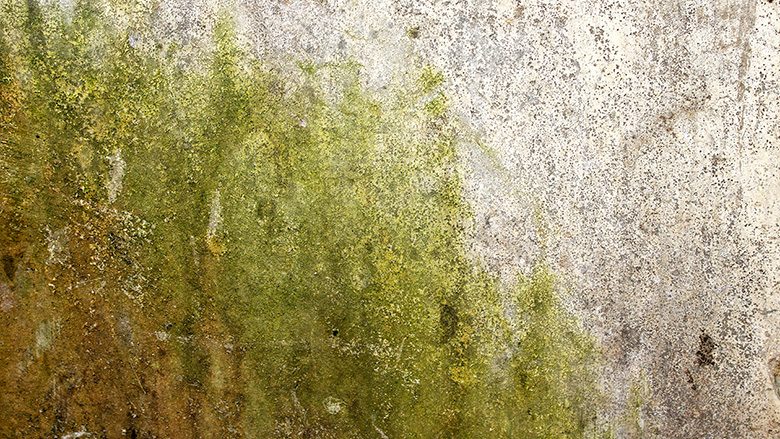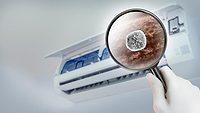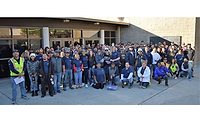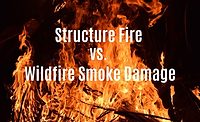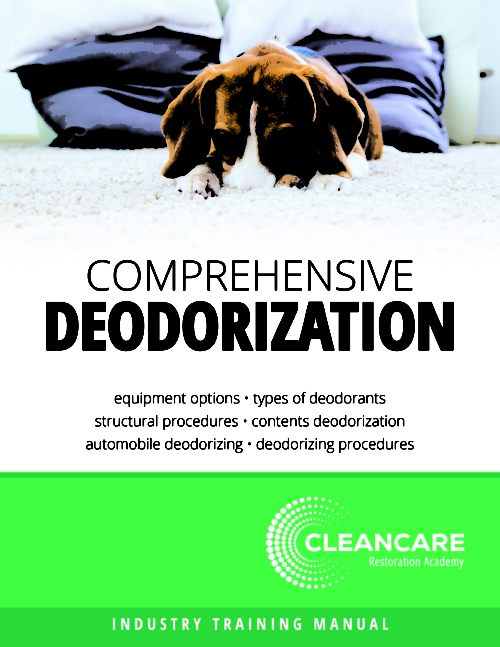Safeguarding Buildings from Wildfire Smoke: Restoration and Remediation Insights

Photo: Dimple Bhati / iStock via Getty Images Plus
The recent wildfires in California have been unprecedented.
In addition to the devastating effects of the fires, air quality has become greatly compromised in surrounding areas and these effects can travel for hundreds of miles by the prevailing winds.
Wildfire events have become more frequent and intense in the past few years. Some have linked this to climate change and other factors that aren’t easily solved.
Bad outdoor air will always find its way indoors, as no building can be completely sealed. Wildfire smoke contains many elements that will degrade air quality and can negatively impact a person’s health. A major factor in wildfire smoke is particles. These can be microscopic, but when they concentrate enough you can see the visible smoke.
Of most concern are PM 2.5 or smaller particles. PM stands for Particulate Matter and 2.5 is measured 2.5 microns or less. A micron is 1/ 25,000 of an inch. By comparison, a human hair is 50 to 70 microns. Because they are so small and light, they can easily travel hundreds of miles from their point of origin. In the summer 2023, wildfires in northern Canada, produced murky skies and burning smells in New York city and other cities along the east coast.
There are also other concerning contaminants produced by fires. TVOC (Total Volatile Organic Compounds), gaseous compounds like Formaldehyde, Methane, Carbon Monoxide, Acetone, Nitrogen Oxide and others. These can range from irritating to toxic. Properties on fire will emit these and many other compounds into the air. Not only inside the building, but everything else, including furnishings, plastics, etc. and other compounds that degrade air quality.

Photo: Bill Oxford / E+ via Getty Images
Lastly, fires produce ash. This ash can become easily airborne by prevailing winds and affect air quality by increasing particulate and TVOC. These can affect air quality in surrounding areas for up to two years.
So how can we restore and remediate buildings and better protect our indoor air quality?
If your property has suffered fire damage, all the contaminants mentioned above will be present at unhealthy levels.
First, water will be used to put out the fire. That means there will be water and moisture all over, which can now begin to grow mold. Mold can grow in as little as 24 hours, so fast action is needed. Drying these areas as soon as possible is important to prevent this growth.
Also, any materials that got wet, flooring, drywall, etc. should be replaced. Drywall, for example, may seem to be dry but it can retain moisture and grow mold on the backside of the wall and become a significant mold problem over time.
In these cases, always consult a professional remediation contractor who should use an industrial hygiene professional to devise the remediation plan and testing to ensure there are no microbial or indoor air quality concerns post remediation.
The materials you choose to rebuild can affect your indoor air. Where possible use low VOC emitting materials as these will lower TVOC levels. Your HVAC systems are the lungs of your home or office. Be sure to have these systems checked and cleaned post remediation and be sure the filters are changed before, during and after the process.
Smoke odors can be difficult to remove as odorous smoke particles can seep and embed into building materials and furnishings. Painting walls, replacing flooring, deep cleaning furnishings and using HEPA vacuuming can help to remove these odors. Also, bi-polar ionization air purification technology, which is used in many smoking casinos to control smoke odor can be highly effective integrated into the HVAC system both during and post remediation to reduce smoke odor. BPI is also highly effective at stopping microbial growth.
If your property is in an air quality alert area but not damaged, there are things you can do to help protect the indoor air from these events.
USEPA has stated the three critical factors to improving indoor air quality are Source Control, Ventilation and Air Cleaning.
Starting with source control, knowing the outdoor air quality is important so you can know when to act. Airnow.gov can tell you the outdoor air quality index in cities across the US and will alert you to unhealthy levels so check this often.
When outdoor air quality is bad there are two important things you can do to help minimize the impact to your indoor air.
One is to keep the outdoor air out. In a commercial building, this means closing the outside air dampers that allow the building to mix outdoor air into the air supplied into the space. This may be done by means of an adjustment to the building automation system or by manually closing them. Often these are operated by actuators that may not work so verify if they operate. Also, these dampers depending on age may not seal well and contaminated air will still get in, so that should be looked at.
Ventilation and air cleaning must also be considered. Ventilation is critical to the performance of any air cleaning system. Check to see that your ventilation systems are in balance, the building is slightly positively pressured to keep outdoor air out and air delivery is in balance to all spaces. For air cleaning be sure filters are sealed well to their frames not to allow contaminated air to bypass the filter.
Change the filters frequently and if possible, upgrade filters to a higher MERV rating. MERV 13 or higher is recommended. An active air cleaning like bi-polar air ionization will help as air ions, like in nature, will reduce particles and break down VOC gases, all of which are produced by wildfire smoke.
Knowledge is power. A good quality air monitor can measure indoor contaminants like PM 2.5 and TVOC and tell you when your indoor air needs attention. Many superior monitors also monitor outside air and can alert you to adverse outside conditions and allow you to take proactive actions.
Wildfires can produce devastating effects to the eco-system and to our homes and businesses. These effects can be felt hundreds of miles from the source and degrade the indoor air we breathe.
By using the proactive and reactive strategies mentioned, people can protect their indoor air and minimize the impact of these situations which are occurring more frequently.
Wildfire smoke can destroy the health of a building. Knowing how to restore and remediate is key to bringing smoke exposed buildings back to safety.Looking for a reprint of this article?
From high-res PDFs to custom plaques, order your copy today!



